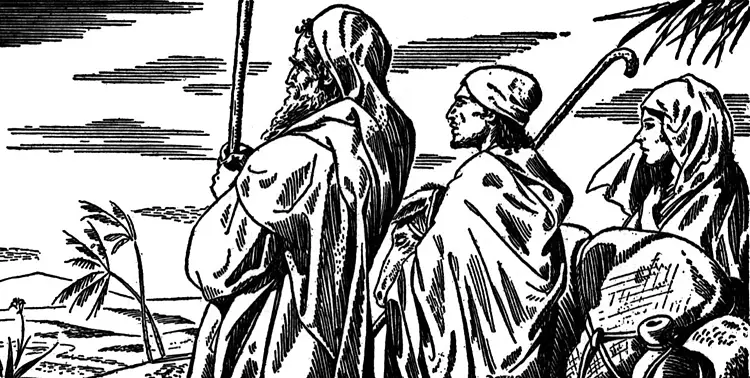Daily Life of Mesopotamia
Daily life in Mesopotamia was, in some ways, not unlike our modern existence. People were recognised by social rank, they lived in different forms of housing, the family was important, as was their leisure time.


Social classes
- In the same way as our modern societies, Mesopotamians belonged to different social classes.
- The kings of city-states, regions or empires were at the very top of the social ladder. They were regarded as the main connection with the local gods. The gods were said to have chosen their kings and, if they were happy with their leader, he and his kingdom would prosper.
- After the kings, came the priests who were also people held in great esteem as they dealt with religious ceremonies and the spiritual side of daily life. The nobility was on a similar level and consisted of military leaders or high-ranking professionals.
- Then there were the lower classes. Farmers made up a large number of people in this category as did others who carried out jobs that were important to the everyday life of the city-states, such as builders, butchers, brick makers, soldiers and sailors. Although it was not easy, sometimes people could work their way up the social ranks.
- Slaves were at the very bottom of the social classes. Mesopotamian slaves could be either male or female and there were child slaves too.
- Slaves were sometimes given heavy jobs, such as building roads and temples. They also did more skilled jobs, including teaching, jewellery-making and accountancy.

Homes
- The type of home you had in ancient Mesopotamia was closely related to your social class. The kings lived in luxurious palaces with elaborate decoration and sculptures inside.
- Most people lived in houses made of sun-dried mud bricks. The richest had mud houses on many levels with balconies and they often had courtyards. Most people lived in smaller houses, often without basic windows and the houses were usually crammed together.
- The very poorest people in society lived in houses made out of reeds. These were simply planted in the ground and then tied together to form a roof.

Furniture
- There were stools made of wooden frames and reeds, chairs were also made of wood and not that unlike some of our modern chairs. Wealthier houses had couches with ornamental legs and a luxurious finishing.
- Most houses had tables and those with means had tables with a metal finishing. People would eat their evening meals at the table as we do today.
- A lot of people had beds made from solid wooden frames with a wooden or rope base. They also had mattresses with wool or goat’s hair stuffed inside them, bed sheets and pillows. Poorer people could not afford beds and usually slept on reed mats.

The family
- The family was very important in ancient Mesopotamia, but it was dominated by the men. The woman had to get permission from her husband to do many things.
- Men and women had to work. Poorer male children often learned practical job skills from the father while the girls often had to carry out domestic tasks. Wealthier male children went to school, but females did not get that opportunity.
- If a married couple were unhappy they were allowed to get a divorce although this was much easier for men than it was for women.
- Children were expected to be obedient and show respect to their parents otherwise they could be severely punished.

Leisure and entertainment
- The ancient Mesopotamians enjoyed many different forms of leisure and entertainment. Men, in particular, liked sport. If you came from the lower classes you would have enjoyed physical sports, such as wrestling. Wealthier people might have gone hunting instead.
- Families liked to play board games and listen to stories. Some families would have individuals who could sing or play a musical instrument. The Mesopotamians had stringed instruments, such as harps and wind instruments, including flutes.
- IThose at the top of society could pay musicians and singers to perform in their palaces. They would drink beer and enjoy lavish feasts.

Clothing and food
- The ancient Mesopotamians ate fish and meat from animals such as sheep and pigs. But they had a varied diet and also ate fruit, including apples, pears, figs, apricots and melons. They enjoyed vegetables too, such as cabbage, peas, beans and cucumbers.
- They were the first to invent beer and it was a very popular drink in Mesopotamian culture. People would drink it at any time although it was very popular with the evening meal. They also drank wine and water.
- Men would often wear clothes from animal skins, such as sheepskin, from which robes or skirts were made for them. Soldiers would wear a special uniform with hooded capes.
- Women also wore robes though they tended to be more colourful and elaborate than the men’s version. Both men and women wore sandals.



